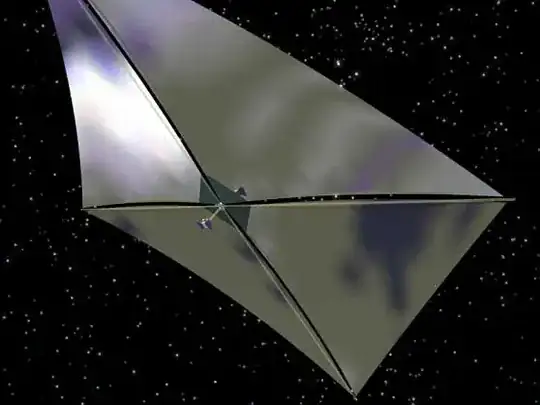TLDR;
The equations:
$$r_{B} = \sqrt{\frac{F}{2.46\times 10^{-14}}}$$
or rearranging for
$$F = r_{B}^{2} \times 2.46\times 10^{-14}$$
Where $F$ is the fraction of light blocked ($F=0.01$ gives your $1\%$) and $r_{B}$ is the radius of your satellite in meters which will achieve this.
For one percent reduction, using the equations above, we need a satellite of radius $6.376 \times 10^{5}$ m , or $637.6$ km - pretty big to say the least! (roughly the size of Alaska).
The Maths
Initially you added a 'mathematics' tag onto this question - I'm assuming you wanted something more along the lines of a hard science tag (rather than asking about building a mathematical system as the tag is intended).
Distance to $L_1$
The wiki for Lagrangian points gives this equation:
$$d_{E} \approx D \sqrt[3]{\frac{M_{E}}{3M_{S}}} $$
Where $d_E$ is the distance $L_{1}$ is from Earth, $D$ is the distance between the Sun and Earth and $M_S$ and $M_{E}$ are the masses of the sun and earth respectively.
Using:
$$D = 149597870700 \text{ m}$$
(This is 1 Au, the average distance, so will change but the equation is already approximate)
$$M_S = 1.9885 \times 10^{30} \text{ kg}$$
$$M_E = 5.9724 \times 10^{24} \text{ kg}$$
As given by the NASA factsheet.
Giving us $d_{E} \approx 1.49656 \times 10^{9} \text{ m}$ or $1.5$ million kilometers.
Now lets look at what this means for how large a satellite you'll need.
The radius, $r_B$, of the Blocker projected onto the Earth gives a shadow with size $r_B^{'} = \frac{D}{d_{S}}r_B$ where $d_{S}$ is the distance the satellite is from the sun ($d_{S} = D - d_{E}$).
If we want to know the fraction, $F$, of light the satellite will block we can compare the areas of circles presented (the earth is actually a sphere so this won't be exact).
$$F = \frac{\pi r_{B}^{'2}}{\pi r_{E}^{2}} = \frac{(r_{B} \frac{D}{D-d_{E}})^{2}}{r_{E}^{2}} = r_{B}^{2} \times 2.46 \times 10^{-14}$$
Which you can use to calculate how much light you would block out for a satellite of a particular radius or rearrange to get the radius needed for a particular fraction ($r_{B}^{2} = \sqrt{\frac{F}{2.46\times 10^{-14}}}$ ).
